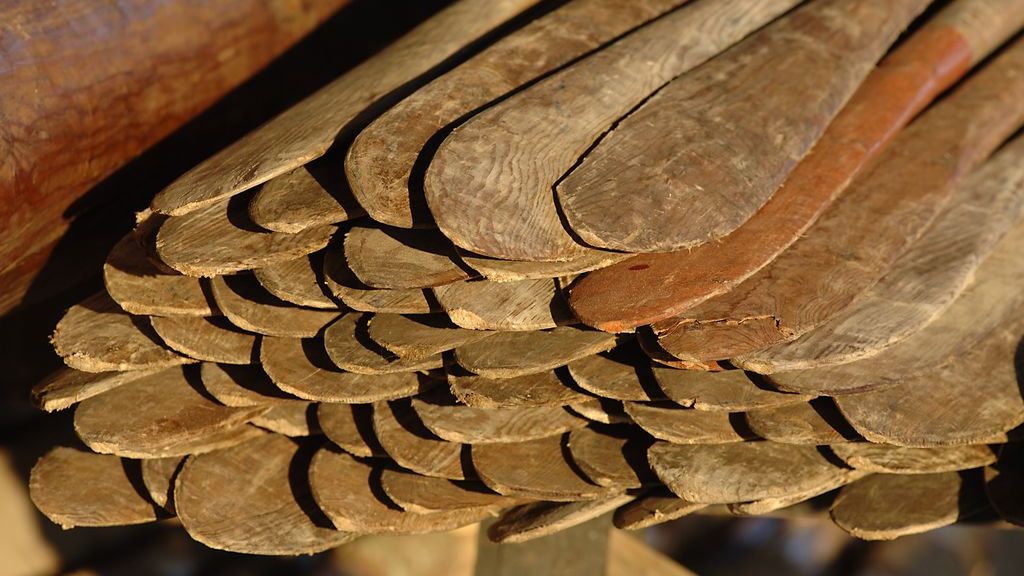The Sea Stallion and the Viking Ship Museum in Roskilde had a research team in southern England last week and quite a few harbour masters, tourism managers, and local mayors are now wandering around scratching their heads and trying to be very creative.
They are probably also going over the story of the world’s largest Viking ship reconstruction, the “Sea Stallion from Glendalough”, made famous all over the world last year by the intense media attention when it sailed from Roskilde, round the north of Scotland, and on to Dublin – where it spent the winter in the national museum and was seen by a record number of visitors.
On 29th June, the floating research project continues. After leaving Dublin, the course will be south, round Land’s End, and into the English Channel. The Sea Stallion will stick close to the south coast of England with its famous seaside towns and historic harbours from the days of the full riggers, and then cross the North Sea to Danish waters. The voyage will end in Roskilde on 9th August.
On Tuesday 6 May, a research team consisting of skipper Carsten Hvid, project leader Preben Rather Sørensen, and shipbuilder Søren Nielsen set off to the English Channel coast. They were to visit as many suitable towns and harbours as possible in four days. A lot of harbour masters and other authorities had to be contacted to find the potential port facilities needed for the Sea Stallion and its crew.
Fortunately, almost all these people were extremely positive about a visit from the Sea Stallion. They could obviously see the commercial possibilities in a visit from a tourist magnet like a Viking longship. But it also soon became clear that there were a lot of practical problems – problems quite different from those encountered on last year’s voyage round the north of Scotland, where most of the time the ship was sailing along thinly populated coasts – with plenty of room for big ships.
The south coast of England in the summer season is an inferno of tourists and visiting pleasure boats from all over the UK and much of Europe. The harbours have few berths and visiting boats soon pile up, especially in harbours that have lock gates and don’t look like small deserts when the tide goes out – another challenge for the Sea Stallion.
The research team was systematic, starting in the west at Falmouth and working their way bit by bit through towns like Brighton, Portsmouth, Hastings, Dover and ending at Ramsgate in the south-east corner of England. A lot of smaller harbours were also briefly checked.
“In reality, there are not all that many suitable harbours,” says skipper Carsten Hvid. “And we came home with a whole bucketful of problems to solve. But solutions are easier to find if you know the problems beforehand, so now we have to go home and think. Actually, I am extremely satisfied with this trip and feel quite confident about the completing the project. I should add that we knew about quite a few of the problems beforehand, but it was good to see them with our own eyes.”
“Finding overnight accommodation for the large crew is a real challenge in itself when you are in an area where tourists have booked every bed and camping spot. A hard nut to crack”, says Carsten Hvid.
The harbours we will put into will vary in type from modern marinas to old industrial harbours. Our visit to Portsmouth was very positive. We are seriously considering putting in there for a stay of several days. It’s a town with a long history of seafaring. Many famous seamen have cast off from Portsmouth. And there is a perfect quay berth at the “Mary Rose”, one of the town’s maritime museums.”
“But we have to weigh it up carefully, because we also have to have time for the sailing tests we have yet to do and the other on-board research. And our crew also need to come home on time, so the best wind conditions simply must be exploited. At the same time, the voyage is also an educational project, so it is important that we set up the exhibition we have with us in as many towns as possible. And we are obviously happy about the media’s interest in us, so we must service them and give them a chance to come on board.”
“The fact is that most harbours would like us to visit them. But it is difficult for them, because we cannot give an exact time and date. It is always plus/minus three weeks with us and a town can find that difficult to work with. It will probably be more difficult to find harbours for the Sea Stallion this year than it was last year. We have not yet committed ourselves anywhere, but within quite a short time all the English harbours we found suitable will receive an application from us for accommodation for ship and crew, which will also explain that we will need certain facilities. Whatever else, this trip has certainly equipped us to be very goal-oriented about the harbours we approach”, concludes Carsten Hvid.



